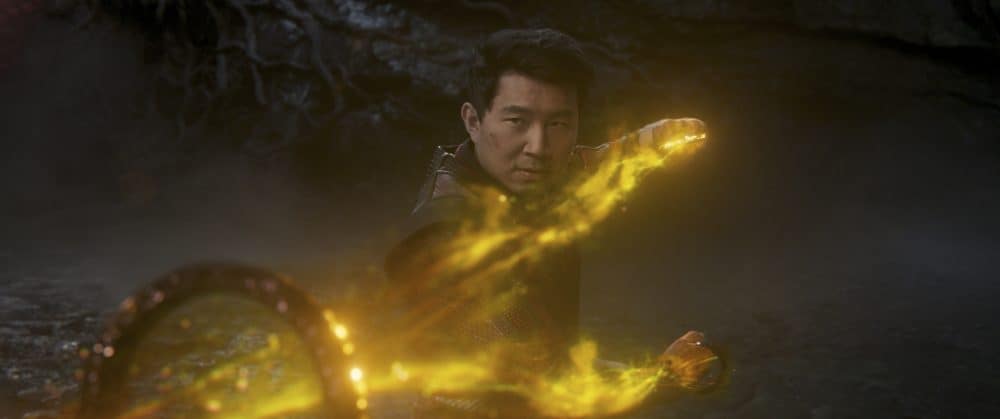When Dianne Chadwick created the logo for the mysterious Ten Rings organization as the lead graphic designer for “Iron Man,” the first film in the Marvel Cinematic Universe, she never imagined that the studio would feature it center stage 14 years later. She also never figured the logo would be at the center of controversy.
Now, after earlier complaints that the original art was disrespectful to the Mongolian language, there’s a change in design that eagle-eyed fans of the Marvel Cinematic Universe may notice: In “Shang-Chi and the Legend of the Ten Rings,” which bows Sept. 3, the logo for the Ten Rings organization now features Chinese, not Mongolian, lettering.
Chadwick’s original red and black insignia, featuring two crossed swords enclosed by 10 interlocking circles, was inscribed with the names of ancient Mongolian tribes in traditional vertical script. It became one of the franchise’s first Easter eggs, later appearing in “Iron Man 3,” the Marvel One-Shot “All Hail the King,” and a deleted scene in “Ant-Man.”
In the wake of “Iron Man 3” in 2013, however, the Mongolian government sent an official letter of complaint to Marvel Studios president Kevin Feige, declaring that the film’s use of Mongolian script offensively tied the country’s intangible cultural heritage to a terrorist group.
In “Shang-Chi” a new black and white version of the logo swaps out the Mongolian for 10 inoffensive Chinese characters written in ancient seal script, all synonyms for strength or power.
The variation likely helps to further differentiate between the current film’s version of the Mandarin title character and prior controversial depictions of the Ten Rings head honcho — and smooths its path into the Marvelmad China market, where viewers and censors are on high alert for any hints of Fu Manchu- and Fin Fang Foom-Esque racism.
Chadwick regrets that her design upset Mongolian fans, stating: “Of course we tried very hard not to offend anyone; we are creating for a worldwide audience.” But it turns out that she needn’t have worried: Oyungerel Tsedevdamba, Mongolia’s then minister of culture, sports and tourism, who penned the complaint to Marvel, is the one with regrets and now describes Chadwick’s use of Mongolian as a “brilliant choice.”
Last year China began a crackdown on the teaching of Mongolian script in Inner Mongolia — a move that has endangered the existence of the script and sparked widespread protest. “My complaint was the kind that a happy child makes about just having bread but not cake on the table,” Tsedevdamba says. “When even the bread disappears, everything looks good, even a terrorist logo. I wish Marvel had stood firm on its use of Mongolian script. I want the world to use it — any movie, in any way.”
Chadwick originally selected the script over Mongolia’s standard Cyrillic to avoid assumption that it was Russian. “Putting Mongolian script in Afghanistan was a way to signal, ‘Oh wait, hang on — there’s something larger and unusual going on. This is beyond just a terrorist group in the Middle East,’” she explains. “We could’ve just said ‘black,’ ‘white,’ ‘purple’ [as the names of the tribes] and I’m sure many people would’ve never been the wiser, but we were really trying to put a lot of thought into it and add some history.”
Tsedevdamba now considers the concerns expressed locally about those decisions “unimportant” and her 2013 letter as counterproductive: The historic script was almost wiped out in Mongolia by 1990 after four decades of Communist repression, but the Ten Rings logo put it on screens across the planet.
Disney/Marvel Studios
She is inclined to see the revamped “Shang-Chi” emblem as an effort to court the Chinese market rather than a response to her complaint since she never received acknowledgment of receipt or reply. “I gave them a bad excuse for the change; if they asked me now, I’d tell them to change it back.”
For her part, Chadwick appreciates that the new logo aims, as she did, to reach back into history for “an ancient quality.” And, she allows, using the Chinese characters selected “is certainly a safer approach.
This content was originally published here.


